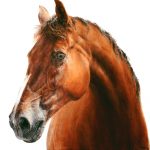 As the horizon rises to meet the sun slipping behind cloud into evening, I ascend the hill behind the house with my equine friend. The other two horses are already snacking on the soft straw covering the level section where we arrive. Looking down, the valley opens green and inviting before rising to the small white village perched on a hill at its extremity. In a time of faceless death, this is a soothing exit. Pip seems to be ready. Within minutes I am cradling the head of my dying mare, whispering reassurances to the friend I am wrenching away. The growing emptiness is vast and heavy. I choke on my tears. Enough self-indulgence. I bend my lips to Pip’s brow and thank her for all the joy that she has shared with me. How fortunate I am to know such pain for without it there could have been no joy.
As the horizon rises to meet the sun slipping behind cloud into evening, I ascend the hill behind the house with my equine friend. The other two horses are already snacking on the soft straw covering the level section where we arrive. Looking down, the valley opens green and inviting before rising to the small white village perched on a hill at its extremity. In a time of faceless death, this is a soothing exit. Pip seems to be ready. Within minutes I am cradling the head of my dying mare, whispering reassurances to the friend I am wrenching away. The growing emptiness is vast and heavy. I choke on my tears. Enough self-indulgence. I bend my lips to Pip’s brow and thank her for all the joy that she has shared with me. How fortunate I am to know such pain for without it there could have been no joy.
Pain at the start
Officially, I am Pip’s eighth owner and she has been with me for eight years. Seven owners in the fifteen years before she entered my life this liver chestnut mare had endured, most of whom had confessed to Vicki that she was a ‘hot ride’. Ridden to intermediate level dressage in the Netherlands, it was claimed that this Dutch warmblood was also a capable jumper. She loves to do it, I was told, as she was chased over the fences. The horse could jump and did so obediently but I missed any enthusiasm.
Soon I discovered why. When Pip came to me she had pain in her right shoulder edging up into the lower neck. Discomfort was also evident in her lumbar region. Her saddle, which was a mandatory part of her purchase extended past her ribs. The lack of support explained the discomfort. The cause of the pain required a bit more investigation. Eventually, I discovered it. Pip’s right shoulder was lower and lay about five centimetres (two and a half inches) to the rear of her left one, with the result that the saddle dug straight into it on every stride if not continuously. Small wonder that she had earned a reputation as a ‘hot ride’. Seven different owners up to intermediate level, just what does such a reputation say about the state of the Dutch equestrian establishment?
Psychologically, Pip was a mess as well. I remember the first time when I removed all her tack. We were on our own in a large jumping arena. When the last restraint came off, she bolted and then careered up and down the fence line, absolutely panic-stricken. All I could do was corner her with my body and a rope lead looped over my hand. There we stood for up to twenty minutes simply doing ‘nothing’. Many weeks passed before we no longer needed to repeat this performance.
Pain at the end
As we edged into last autumn, Pip’s coat began to lengthen as we had grown accustomed to seeing every winter. Long angora plucks, she lost them each spring to reveal the silky chestnut coat I had grown to appreciate. This time though the hair curled and my concern grew with each lengthening curl. At the same time Pip began to experience dental issues. Broken molars were followed by mouth ulcers, salivation and dental infections. The mare’s immune system was collapsing. It was then that I realised what we were dealing with. Cushing’s syndrome or PPIP (pituitary pars intermedius disfunction) as we are now officially supposed to refer to it, not a death sentence, Vicki and I thought, but it was already requiring and would continue to require high-level maintenance.
Not too long ago Vicki posted an article on clostridial muscle and fascia infection (myonecrosis – see https://horsesidevetguide.com/drv/Diagnosis/96/clostridial-muscle-amp-fascia-infection-myonecrosis/) on our Humans for Horses Facebook page. Several days ago we got to see it up horrifyingly close and personal. She must have picked the bacteria up in the clay. Pip is a grazer not of the selective but the comprehensive type. Watching her tackle the vegetation is a bit akin to monitoring a vacuum cleaner. The first we noticed of it was when we asked our vet to inspect her mouth again to check whether she was still experiencing dental issues. He noticed swelling towards the back of the lower left jaw and around the hyoid on the same side. There was also what seemed to be a large oedema under Pip’s tongue again on the left. An antihistamine was administered.
The following morning we were startled to see that Pip’s entire head was swollen, especially on the left and around the muzzle and nose on the right. So enlarged was her head that her left eye was almost closed and the halter no longer fitted. After dealing with someone else’s emergency, the vet came to attend to ours. Could it be snakebite? We started to investigate, while the swelling began to move into the neck and Pip’s breathing became laboured. If we could not find a solution, she would slowly choke to death. That night I decided that, if Pip did not improve during the following day, we would have to consider euthanasia.
Being there
Friday morning greeted us with a heightened emergency. The vet arrived and administered heavy-duty drugs and we agreed that, if there was no improvement, Pip would have to be euthanised the next day, this morning. As it turned out, we were being very optimistic. As the day progressed, her condition worsened. I have never seen anything quite so systemically ruthless and relentless in its aggression. The swelling spread to the upper right side of her face and further down the neck. Pip was clearly in pain and her breathing roared. We could not wait for morning. If we did, she might, choke during the night. We had since heard a horror story of a horse with the same condition, doing just that and then smashing their skull against a wall in panic. We were not prepared to risk that, so we called the vet to arrange for my mare to be euthanised.
The vet was only scheduled to come at about half past eight in the evening. The last job had just gone out the door, so I had time to be there with my equine friend. I was absolutely stunned to find her gobbling up all the straw that we had put down in the stable in which we had confined her. Loss of appetite was supposed to be one of the symptoms. Clearly, no one had told Pip. Was this the improvement, the miracle, that I had been hoping for? I quickly fetched some alfalfa and she started to polish that off as well. Vicki arrived and was similarly gobsmacked. But then we heard the roaring above the noise of her chewing. The swelling had travelled further down the neck. No miracles were on offer, not then.
Being there with Pip during her last few waking hours was very special. After she had eaten, she raised her open eye. It was beginning to close. She sought contact with me, her face brushing against my body. I cradled her head in one hand and gently stroked her forehead with the other. Slowly she drifted into a slumber before waking up some time later when the other horses were being fed. Me too, she grunted. So she received her favourite muesli but now softened into a beet pulp mix. Every bit of it disappeared into her mouth, the last dregs with my help as I scooped them out of the bucket. Pain there was at the end but I think, I hope, that we managed to ease it a bit. And then the vet arrived and it was time.
The joy of the horse
To be honest, I cannot claim with any certainty that I managed to contribute to Pip’s joie de vivre, although I like to think that I did. What probably helped her immediately was my decision not to ride her until she had settled down and we had developed a trusting relationship. Focusing on preparing for riding in terms of what I did with her almost undid that however. It was when I decided that our relationship enjoyed greater priority than riding and abandoned expectation, that I began to notice a pleasant change in her. She seemed more relaxed.
If there is any single thing that I did which I believe was instrumental in bringing joy into Pip’s life it was my decision to place her in livery in a ‘herd’ along with our other mare, Anaïs. Pip is by nature very sociable and she seemed to enjoy the experience, also because she was no longer stabled and could largely choose when to eat and whether to spend time indoors or outdoors. Around this time she also blew a tendon and everyday care for months on end was crucial in developing a mutually trusting relationship with her.
The happiest and most content that I have every seen Pip was when she was part of a ‘herd’ of up to forty horses on about eight hectares. Although conditions were far from ideal, they did allow the horses making up the ‘herd’ to choose the ‘band’ of horses of which they wished to be a member. The highlight occurred when a late-castrated gelding called Pingo was released into the ‘herd’. He promptly rounded up mares to create a ‘harem band’ of which Pip and Anaïs comprised the core. Pip was his preferred mare and she willingly allowed him to mount her. The time during which my mare lived as part of that band could well have been the happiest of her life. I had never seen her that radiant and content before and have never seen her so since. The experience raised her self-esteem, gave her more confidence to trust me and to relish the activities which we engaged in during my daily visits. It was during this time that she allowed me to ride her out with just a bareback pad and a cavesson, until I could find a saddle to fit her lopsided body (which I never did).
The joy of the human
If the pain of loss is a measure of the joy Pip shared with me, then she has been hugely generous to me and for this I rejoice in being blessed with her presence in my life. Perhaps the most important way in which she has done so is by teaching me, together with our other horses, what is involved in friendship between a horse and a human, especially in relation to presence, trust, self-responsibility, communication, connection…. In fact, the list is so long that I would need a book in which to describe each item. Not surprisingly, it has spawned the book that I was really meant to write about horses and humans. Called, Being Humans for Horses, it features Pip and I on the cover and you can find out more about it here.
When I look back on the time and experiences that I was privileged to share with Pip, I must confess that what has given me the greatest joy in my relationship with her is having been able to help and support her when she has need it without expecting anything in return. This is because it is through this – and not any equine-guided, facilitated, mediated experience – that I have experienced the greatest self-development. Discontent and anger used to be the guiding forces of my life to the extent that I crossed the earth twice in search of a remedy. I found one. It is described in Being Humans for Horses and it was there within me waiting to be discovered. Helping horses helped me do so, perhaps mainly because, unlike humans, they are so utterly authentic, congruent and honest. What you see is what you get. Pip was no exception.
The pain of joy
The night before Pip died I slipped into her stable to check on her at just before half past four in the morning. She was having difficulties coming to rest. Intuitively I felt that I should share some Equine Touch bodywork with her. I found myself doing all of the procedures that I used to do with her when we were working on her tendon together, the drainage moves being particularly helpful. She even allowed me to do the stifle moves, something which she normally does not do. By the time I finished, Pip was asleep.
As I gazed down on Pip’s face, now framed in my hands and restful in death albeit deformed by swelling and excessive hair, I felt blessed that I had been able to help her a tiny bit. The time that I spent comforting and reassuring her in her last few waking hours and as she went down on her return to the earth, seem so pitiful when compared with the blessings that she has shared with me. Yes, there is pain in her passing but if this is the price I must pay for the joy which Pip has given me, then it is one that I am prepared to pay with interest. Let us rejoice and give thanks to the horses that give us cause to experience the pain of joy!
Equine Touch
Our Equine Touch business is called Humans for Horses, you can find our website at:
http://www.humansforhorses.com/
and our Facebook page at:
https://www.facebook.com/Humans.for.Horses
Horses and Humans on Facebook
May I remind you that we now have a Horses and Humans group on Facebook. If you would like to leave a comment, you can do so on this blog or on the the Horses and Humans Facebook group page. All new posts will feature on that page along with additional content posted by any of our members. Please feel free to join us at:
https://www.facebook.com/groups/horsesandhumans/
There is also a Horses and Humans publications page, which contains information concerning the publications released under the Horses and Humans imprint. Some of those publications will be free of charge. You will find it here:
https://www.facebook.com/horsesandhumans
I also have a Facebook page through which you may contact me. You will find it at:
https://www.facebook.com/andrewglynsmail

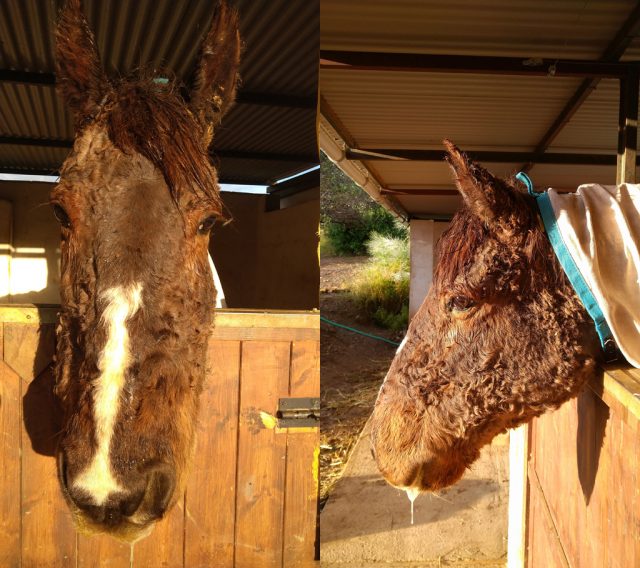
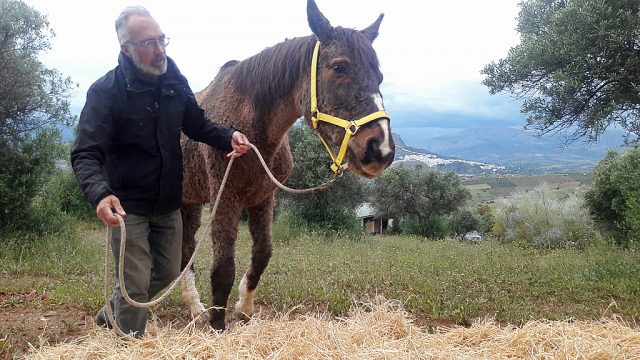
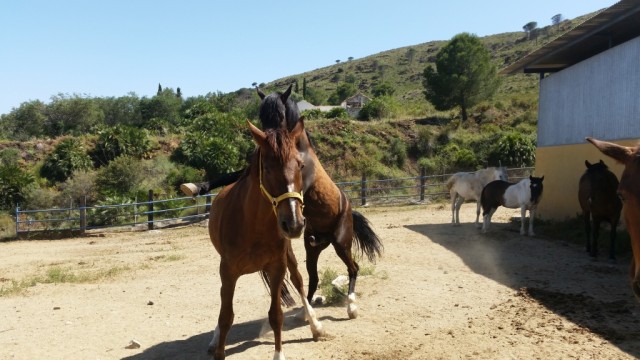

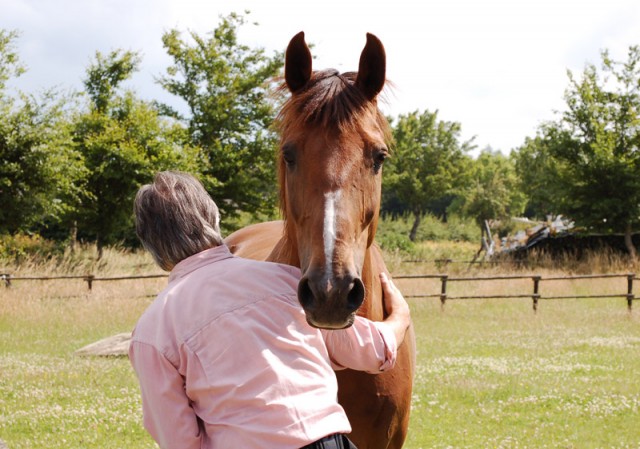



Such a beautiful tribute to special mare. Your last paragraph captures perfectly how I have felt at the passing of my beloved friends. Thank you.
Thank you, Jackie! Pip was indeed a special mare. But then, aren’t all of our horses special in their own unique way?
I am so sorry for your loss of Pip. Your story brought me to tears. What a blessing you were to each other and what a beautiful tale you have told here. Her pain is gone and she is running free and beautifully whole again. God bless and keep you and comfort you during this time of loss.
Thank you for your comforting words, Julie. They mean a great deal to me!